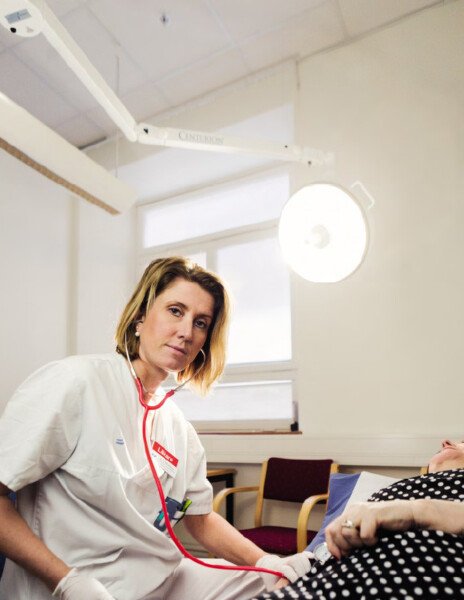Anna Martling: “It’s when you meet the patient that the circle closes”
Research breakthroughs are not just about new discoveries. Anna Martling tells us how a long period spent on development meant that she was able to offer a patient life-saving treatment.
Name: Anna Martling
Title: Professor of surgery specializing in colorectal cancer at Karolinska Institutet and senior consultant surgeon at Center of Digestive Diseases, Karolinska University Hospital.

Text: Anders Nilsson, first published in the magazine Medical Science no 1, 2015.
“It was just after the turn of the millennium. The patient was about 25 and was preparing to die. He had rectal cancer which was very advanced and was spreading. The hospital where he lived had explained to him that there was no hope; the tumour was growing so aggressively that there was no longer any chance that it could be cured by an operation. By some roundabout route he arrived at Karolinska University Hospital. He was now sitting in my office and I told him that we could offer him treatment that might lead to a long-term cure. Our research group had been engaged for some time in developing surgical technology. We had learned how to perform more and more extensive interventions and to combine this with the correct dosage of radiation and chemotherapy. The treatment he needed had gradually emerged from our research over many years and we were now able to offer it in a clinical setting.
When we talk about breakthroughs in research, it is often the scientific discoveries we are referring to. But for me, the major breakthrough is when I, as a doctor, after completing a research study, can sit down with a patient and make something better because of our research; when I can offer a patient improved treatment that I know will increase their chances of a cure. That’s the moment when I feel most satisfaction as a researcher. That’s when the circle closes.
We operated on the young man. It’s a tough operation – we removed not only the rectum but also all the nearby organs: the bladder, the prostate and the perineum. But the man survived and recovered well.
He’s now living a good life and is cured from the disease. He has a partner and has gone back to his physically-demanding job. And the treatment that had only just been developed when he had it just under ten years ago is now offered widely throughout the world.
